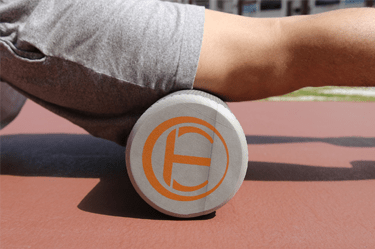Below description of what is fascia based on sufferer experience.
You’re always in pain.
You wish there was an on-off switch that you could just flick.
You wish you could escape the never-ending pounding of aches.
You wish you could sleep well at night.
You wish you could soak in the beauty of life without any distractions.
You’re stiff. You’re miserable. You’re frustrated. You’re confused. At times, it becomes difficult to pinpoint the exact location or the very root cause of your pain. You may make the mistake of taking painkillers, which bring with them a long list of side effects that can make things even worse. Or you could rely on essential oils to help you cope with the pain. The point is, you’d spend days trying to get rid of the persistent pain that’s bothering you without even realizing that the source was right there in front of you the whole time…your fascia!
Fascia is a sheet of connective tissues that is present all over the body. Not to be mistaken for the muscles, fascia is made up of protein fibres which are responsible for the flexibility and mobility of your body.
There are three main types of fascia:
- Visceral Fascia (which is related to internal organs)
- Deep Fascia (which is related to muscles, tissues, nerves, vessels, and bones)
- Superficial Fascia (which is related to the skin)
In this detailed article, I will try to explain how fascia works and why it could be the cause of your pain. Finally, I will share some profound tips on how you can keep it functioning properly! Let’s start.
How does fascia work?
The fascia supports your muscles, bones, skin, and internal organs. It consists of small fibres that run throughout your body. The fascia is loaded with neurons. In fact, it has six times as many neurons as any other tissue present in your body. The webbing of fascia facilitates communication between different muscles. In good condition, it should be able to twist and glide smoothly, which is why, if it is not in optimal condition, you might feel tightness/aches all over your body due to the numbness of neurons. To keep it in A-1 condition, it’s crucial to maintain an active lifestyle.
How to avoid pain generated from the fascia
To maintain flexibility and get rid of the tightness that surrounds your body because of inactive fascia, consider the following tips:

Stretch after a long period of inactivity.
After a long time of inactivity (for example, a good night’s sleep, sitting for too long at your work desk, or after a long aeroplane ride), the fascia bands that are associated with your muscles (the deep fascia) can get cramped and tight. So, make sure that after you wake up in the morning, you do some gentle stretches to get those fibrous tissues up and running. A great way to do that is to sit on the edge of your bed and try to stretch your ankles downwards. Also, do some stretching after every few hours during work.

Always stretch before you exercise
A little dynamic stretching before working out doesn’t hurt. Enabling your muscles for an extended range of motion not only improves the quality of your exercise, it also benefits your fascia. It’s important to loosen it up before you go to the gym or for your daily outdoor workouts. You can do that by jogging lightly or brisk walking to get your body ready for the strenuous activity. Or better yet, you could simply start your primary workout and continue to do it at an extremely slow pace for about 5 minutes.

Use foam rollers for sore spots
At times, you need a little more than just stretching to make your fascia behave. Your muscles can sometimes feel incredibly sore after a good workout session. That’s because your fascia could get twisted after being subjected to too much stress. This could also result from injury. Thankfully, the fix is rather simple; all you’re going to need is a foam roller. Use it to work your hamstrings, calves, gluteus maximus or any other muscle where you feel discomfort. The foam roller gently presses fascia, like dough, and releases tension or twists which might be the cause of the discomfort.

Consider getting professional help: fascia therapy
Sometimes, you’ve got to let go of the things worrying you and let someone help you out. Your fascia determines the condition of your muscles. Considering its significance, you are better off letting the pros handle it. Consult a specialist and let them decide what therapy would be best suited for you. Depending on the condition of your fascia, you may require anything from soothing fascial unwinding to other (somewhat painful) methods. The point is to get your fascia loosened up to get rid of the pain that’s bothering you, so let the expert decide what’s best.
Take-home message
When it comes to your fascia, it’s important to maintain an active lifestyle to avoid stiffness and tangling. Make sure you do some stretches prior to working out and every morning before getting out of bed. Remember, it’s important to keep those nerve endings active. I wish you the best of luck.
When it comes to chronic pain I am here to help you. Book your Free 15-min session with Dawn Cady, owner and founder of pain clinics in Sydney, Australia’s No.1 Pain Freedom Coach.


